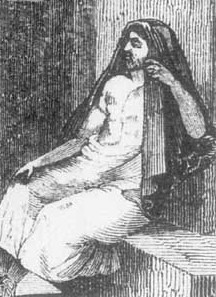
 |
THE GREEK HEROIC AGE | |
| History | ||
| 1.- THE HEROIC AGE (Vth century B.C.) | |||||||||||||
| One
of the most important personalities of this
century is Pericles. Athens
attracted intellectuals from all parts of the Greek world wanting to
satisfy their thirst for knowledge. Rather than coming up with
necessary solutions to practical problems at that time, the scholars
were more interested in developing their own personal intellect. This
desire for wisdom lead them to focus their learning on theoretical
issues. During this period the three
famous (or classical) problems were dealt with and
two methods of reasoning were put into
use. The table below lists the mathematicians who lived during this period and the problems that formed the focus of their study.
|
|||||||||||||
| 2.- ANAXAGORAS OF CLAZOMENAE | |||||||||||||
 |
Anaxagoras of Clazomenae ( +428 B.C.): went to prison for asserting that the sun was not a deity, but a red hot stone and that the moon was an uninhabited earth which received its light from the sun. He spent his life studying living matter which he claimed was made up of infinite individual indivisible elements. According to Plutarch, while he was imprisoned he kept himself busy with his study of squaring the circle. His conclusions are unknown. However, those of another mathematician have had more success. | ||||||||||||
| 3.- HIPPOCRATES OF CHIOS (430 B.C.) | ||||||||||
He
spent his life studying geometry after becoming a victim of fraud in
Byzantium and losing all his money. According to Proclus, he wrote
about "Elements of Geometry" which was later lost like all
other texts written during this century. In one of his works
Simplicius (VIth century A.D.) states that he had copied extracts from
Eudemus' "History of Mathematics" which is also now lost. In
his work Simplicius describes part of the work of Hippocrates about
the quadrature
of lunes (a
lune is a curved shape bounded by two circular arcs whose radii are
different) along with the following theorem:
Hippocrates used this theorem to square the circle. |
||||||||||
|
||||||||||
|
||||||||||||||
|
|||||||||||
The three circular sections in this diagram are similar and satisfy Pythagoras' theorem. S1+S2=S3 If you take away the two smaller sections from the semicircle in the first example and the big section away in the other example then we can prove that the area of the half-moon is equal to that of the triangle. |
As the area of a triangle is equal to that of a square whose side is half the length of the base of the triangle, then we can use this to obtain the first example of squaring a curvilinear shape. |
| Rosa Jiménez Iraundegui | ||
 |
||
| Spanish Ministry of Education. Year 2001 | ||